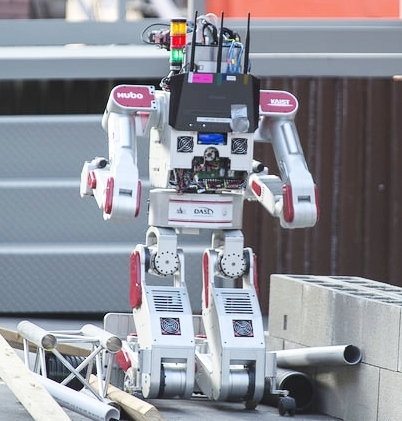Source: Office of Naval Research
Whether it’s winter or summer, every two years people all over the world tune in for the Olympics. This year’s Winter Olympics were held in PyeongChang, South Korea. An important and arguably one of the most popular parts of the Olympics, is the opening ceremony. The opening ceremony contains performances and events that officially start the beginning of the Olympics.
One special event within the opening ceremony, is the lighting of the torch. The Olympic torch relay that is completed in today’s modern Olympics honors the ancient games that started it all. The ancient games took place in Olympia, Greece and used the sun to light the torch, to ensure purity. A flame burned on the altar of the Greek Goddess Hestia, and such fires were also lit on the altars of Zeus and Hera, during the ancient games. During the modern day Olympics, the flames are lit for the entire duration of the Olympics and are extinguished at the end of the games at the closing ceremony.
This year’s Olympic torch lighting was done a little differently. HUBO the humanoid robot, created by the Korea Advanced Institute of Science (KAIST) and was included in the relay race and ran the final leg of the relay in the city of PyeongChang,South Korea. HUBO was developed by Professor Jun Ho Oh from the Department of Mechanical Engineering at KAIST University, and is best known for being the winner of the Defense Advanced Research Projects Agency (DARPA) Robotics Challenge in 2015.
The DARPA Robotics Challenge is a competition encouraging participants to develop semi-autonomous ground robots that can do complex tasks in dangerous, degraded, human-engineered environments, which falls in line with DARPA’s mission statement, “Creating breakthrough technologies and capabilities for national security.” In 2015, there were over 22 different robots created by robotics teams from all around the world, for the challenge. HUBO completed every challenge faster than any other robot in the DARPA competition. The challenges that the robots have to complete are tasks that can be used during any disaster situation. The tasks include:
DARPA Robotics Challenge Requirements
1. Drive a utility vehicle at the site.
Source: Office of Naval Research
2. Travel dismounted across rubble.
3. Remove debris blocking an entryway.
4. Open a door and enter a building.
5. Climb an industrial ladder and traverse an industrial walkway.
6. Use a tool to break through a concrete panel.
7. Locate and close a valve near a leaking pipe.
8. Connect a fire hose to a standpipe and turn on a valve.
KAIST university reported that the HUBO was mainly created for disaster rescue operations. While HUBO was created with ambitious goals, one more humble way it might be able to save lives is by helping car accident victims. Even if technology advances to only have autonomous cars on the road, there may always still be a risk of car accidents happening. In the present time, when 1.3 million car accidents happen per year, worldwide according to Safe International Road Travel, and over 1 million people are killed each year from car accidents, according to the NHTSA, HUBO may be able to help at the scene of a motor vehicle accident. One main problem with how we deal with car accidents today is the often times slow response time of overworked and understaffed first responders, especially in major cities like Detroit, which has a response time of about 52 minutes per accident, according to Bridge News.
Source: Office of Naval Research
A robot like HUBO may be able to help create faster response times and in some situations, may provide safer and quicker help than human responders who may have to put their own lives at risk. HUBO can move debris and break through concrete walls, and may be able to adapt its skills to pry open a crushed vehicle, allowing people trapped in a potentially fatal situation under the vehicle's weight, to be helped. And HUBO may be able to cut metal faster than it takes a couple of firefighters to operate the jaws of life. So, not only can HUBO save lives quicker but it may make first responders’ jobs safer. First responders’ won’t have to move or cut open cars or large debris, so it lowers the risk of them getting injured while trying to help somebody who was involved in a car accident.
Hopefully, HUBO will be fully operational and deployed in life saving situations, all over the world, very soon!
With technology advancing as quickly as it is, people should be aware of everything that technology has to offer. Robots like HUBO can have a huge impact on car accidents and help lessen the number of people injured or killed in car crashes. If you have been involved in a car accident, call a car accident attorney from The Michigan Law Firm, PC at 844.4MI.FIRM for a free legal consultation.



